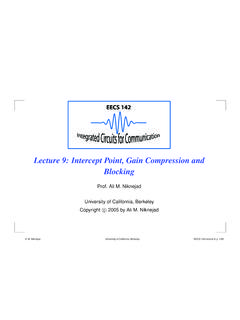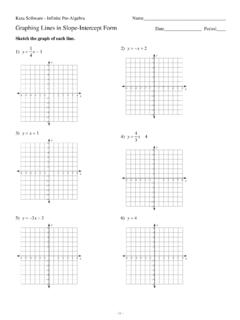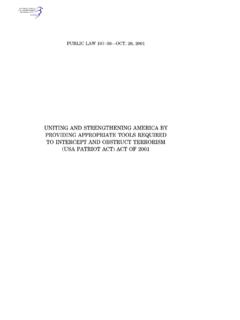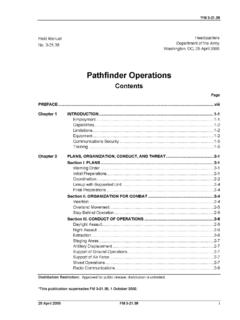Transcription of OEVIF TNE AIR INTERCEPT CONTOLLER COURSE
1 OEVIF TNE AIR INTERCEPT CONTOLLERBASIC COURSE4(V) I ..o o. L t.,uPROVE F R PB LEASE;OT,DTIC,-MAY 2 1 5 DNAVY PERSONNEL RESEARCHANDDEVELOPMENT CENTERSon Diego, Calfonia 92152 IIle. TR 85-22 April 1985 REVIEW OF THE AIR INTERCEPT CONTROLLER BASIC COURSEJohn A. EllisReviewed byEdwin G. AikenApproved byJames S. McMichaelReleased byJ. E. Kohler NayD T ICCommander, *..S. NayELECTEC ornmanding OfficerMA21 8 Navy Personnel Research and Development CenterSan Diego, California 92152-6800 UNCLASSIFIEDSECURITY CLASSFICATION OF THIS PAGEUNCLASSIFIED REPORT DOCUMENTA'ION PAGEla REPORT SECURITY CLASSIFICATION 1b. RESTRICTIVE MARKINGS2a. SECURITY CLASSIFICATION AUTHORITY 3 DISTRIBUTION /AVAILABILITY OF REPORTA pproved for public release; distributionZb OECLASSIFICATION/ DOWNGRADING SCHEDULE PERFORMING ORGANIZATION REPORT NUMBER(S) S.
2 MONITORING ORGANIZATION REPORT NUMBER(S)NPRDC TR 85- 226a NAME OF PERFORMING ORGANIZATION 6b OFFICE SYMBOL 7a. NAME OF MONITORING ORGANIZATIONNavy Personnel Research and (if applicable)Development Center Code 516c. ADDRESS (City, State, and ZIP Code) 7b. ADDRESS (City, State, and ZIP Code)San Diego, CA 92152-68008a. NAME OF FUNDING /SPONSORING 8b. OFFICE SYMBOL 9. PROCUREMENT INSTRUMENT IDENTIFICATION NUMBERORGANIZATION (If applicable) Navy Science Assistance ProgramNaval Surface Weapons Center OP-Ol (NSAP) CPF-I _R8c ADDRESS (City, State, and ZIP Code) 10 SOURCE OF FUNDING NUMBERSPROGRAM PROJECT TASK WORK UNITS ilver Spring, MD 20910 ELEMENT NO. NO NO. ACCESSION F44119 nIi wgUiwnn711 TITLE (include Security Classification)REVIEW OF THE AIR INTERCEPT CONTROLLER BASIC COURSE12 PERSONAL AUTHOR(S)Ellis, John TYPE OF REPORT 13b, TIME COVERED 14 DATE OF REPORT (Year, Month, Day) 5.
3 PAGE COUNTF inal FROM 4J TO AUA pri 2216 SUPPLEMENTARY NOTATIONTR 85-21 addresses related topics. -17 COSATI CODES 18. SUBJECT TERMS (Continue on reverse if necessary and identify by block number)FIELD GROUP SUB-GROUP05 9ir INTERCEPT controller training analysis /19 ABSTRACT (Continue on reverse if necessary and identify by block number)To determine the causes of and suggest possible remedies for reducing the high student attritionrate in the AIC basic COURSE , attrition data from the Fleet Combat Training Center air interceptcontroller (AIC) basic COURSE were analyzed in several ways, the knowledge and laboratory sectionsof the COURSE were reviewed using the instructional quality inventory (IQI)
4 Procedures, and severalissues related to the AIC COURSE and job were a result of the COURSE review, several recommendations were made concerning the AICourse materials and test items. Implementing these recommendations would improve courseuality, but probably would not reduce academic attrition. The most effective strategy for reducingttrition would be to ensure that all students entering the COURSE meet COURSE prerequisites anduccessfully complete the preschool handbook. Students who do not meet these criteria shouldither not be permitted to take the COURSE or receive remedial instruction before beginning DISTRIBuTION/AVAILABILITY OF ABSTRACT 21. ABSTRACT SECURITY CLASSIFICATIONUNCLASSIFIEDWUNLIMITED 0 SAME AS RPT 0 OTIC USERS NAME OF RESPONSIBLE INDIVIDUAL 22b TELEPHONE (include Area Code) 22c.
5 OFFICE SYMBOL --Ellis, John A. (619) 22 5-6434 Code 51, .DO FORM 1473, 84 MAR 83 APR edition may be used until exhausted SECURITY CLASSIFICATION OF THIS PAGEAll other editions are ..7 :FOREWORDThis effort was conducted under the Navy Science Assistance Program (NSAP) inresponse to a request from the Commander in Chief, Pacific Fleet (CINCPACFLT) todetermine the possible causes of and suggest remedies for reducing the high studentattrition rate in the Air INTERCEPT Controller (AIC) basic COURSE . This effort was fundedunder the NSAP project number CPF-I-84. This is the final report on this of this effort are intended for NSAP, CINCPACFLT, CINCLANTFLT, andFleet Combat Training Centers, Atlantic and Pacific (FCTCLANT, FCTCPAC).
6 Appreciation is expressed to the instructors at FCTCLANT and FCTCPAC for theirtime and effort in providing subject matter expertise in the conduct of this E. KOHLER W. TWEEDDALEC ommander, Navy Technical DirectorCommanding . !..AISUMMARYP roblem/BackgroundHigh attrition rates among students in the Navy Tactical Data System (NTDS) and, toa lesser degree, non-NTDS, Air INTERCEPT Controller (AIC) basic COURSE at Fleet CombatTraining Center, Pacific (FCTCPAC) is an important problem for the fleet because thereis a shortage of qualified purpose of this effort was to determine the possible causes of and suggestremedies for reducing the high student attrition rate in the AIC basic of AIC training and attrition consisted of the following four separateinvestigations:1.
7 Analysis of the attrition data for Review/analysis of the knowledge objectives and test Review of the laboratory portion of the Examination of issues related to AIC training and the AIC job in and Recommendations LBased on the findings from the attrition analysis, the most effective strategy forreducing attrition would be to ensure that all students entering the COURSE meet courseprerequisites and successfully complete the preschool handbook. Students who do notmeet these criteria should either not be permitted to take the COURSE or receive remedialinstruction before beginning the COURSE . FCTCPAC should retain the new coursestructure (introduced July 1982), which lowered attrition, shortened courses length, andeliminated academic attrition from the NTDS portion of the a result of the COURSE review, it is recommended that FCTCPAC institute thefollowing COURSE changes listed below.
8 Implementing these recommendations wouldimprove COURSE quality, but probably would not reduce academic Eliminate the instruction and test items associated with unnecessary objectivesfrom the Eliminate the test items associated with nice-to-know Test all essential Use constructed-response ( , fill-in-the-blank, short answer, or listing) Inform students what is essential and what is .- ..- ..:..:..6. Provide oral or written practice for each student for each essential The grading criteria ( , the checklists and rating scales) for the laboratoryexercises should be reviewed and additional documentation should be provided wherenecessary. -i':8. The grading criteria should be included in the curriculum *.
9 *.~.. IPurpose ..1 IGENERAL APPROACH ..IANALYSIS OF ATTRITION DATA .. I-Approach ..1 IResults .. 2 Recommnendations .. 4 ANALYSIS OF KNOWLEDGE OBJECTIVES AND TEST ITEMS ..4 Results and Discussion ..5 Recommendations .. 6 REVIEW OF LABORATORY EXERCISES .. 6 Approach .. 6 Results .. 6R ecommnendations ..6 DISCUSSION OF RELATED 6 CONCLUSIONS AND RECOMMENDATIONS .. 9 APPENDIX --KNOWLEDGE OBJECTIVES .. A-0 DISTRIBUTIONLIST OF TABLESI 1 Attrition Rate in the Old and New 22. Attrition Rate for Each Phase of the Old and New Courses ..33. Analysis of Knowledge Objectives by Category .. 5ixINTRODUCTIONP Problem/BackgroundIIn August 1983, Commander, Training Command, Pacific Fleet (COMTRAPAC052117Z Aug 83) expressed concern about high attrition rates among students in the NavyTactical Data System (NTDS) and, to a lesser degree, non-NTDS, Air INTERCEPT Controller(AIC) basic COURSE at Fleet Combat Training Center, Pacific (FCTCPAC).
10 High attritionin AIC training is an especially important problem because there is a shortage of qualifiedAICs in the fleet. Commander in Chief, Pacific Fleet established a Navy ScienceAssistance Program (NSAP) task to identify deficiencies and recommend improvement inAIC training curriculum content, materials, and training this effort got underway, FCTCPAC changed the COURSE structure, whichsignificantly reduced NTDS student attrition; however, academic attrition for both NTDSand non-NTDS students was still over 25 effort was conducted to determine possible causes of and suggest remedies forreducing the high student attrition rate in the AIC basic APPROACHE xamination of AIC training and attrition consisted of the following four separateinvestigations:1.















